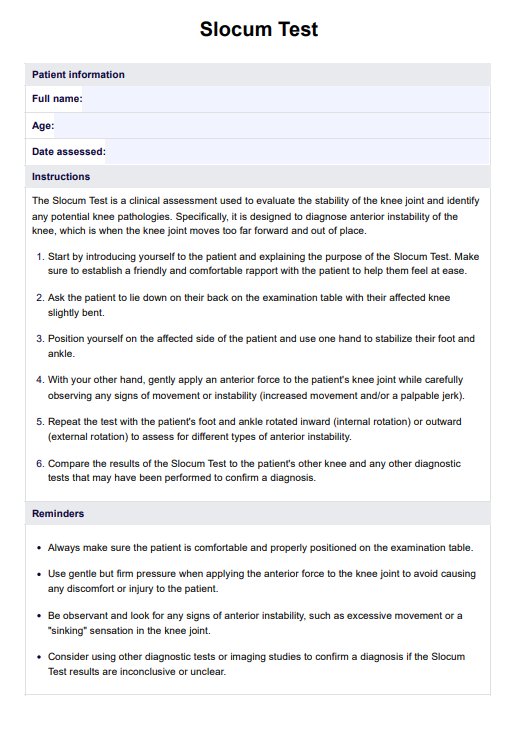The patient is asked to lie down with their affected knee slightly bent to perform the test. The doctor will then apply anterior force with one hand and posterior force to the knee with the other. The patient is then asked to resist the applied pressure, providing feedback on pain or instability.

Slocum Test
Conduct the Slocum Test to assess your patient's knee stability and check for the possibility of anterior instability of the knee.
Use Template
Slocum Test Template
Commonly asked questions
The Slocum Test measures the integrity of the ligaments and joint capsule in the knee. It also helps diagnose anterior cruciate ligament injuries and tears.
The Slocum Test is considered highly reliable, with reports of accuracy ranging from 82-97%.
EHR and practice management software
Get started for free
*No credit card required
Free
$0/usd
Unlimited clients
Telehealth
1GB of storage
Client portal text
Automated billing and online payments











